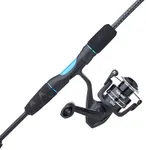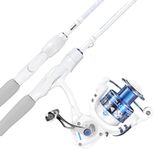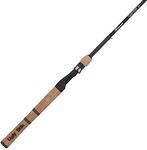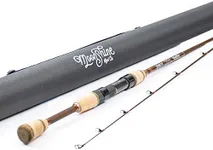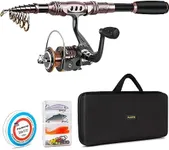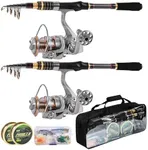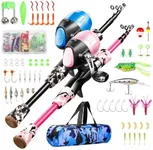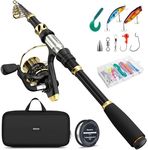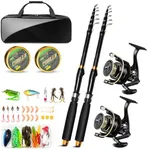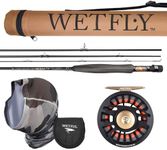Buying Guide for the Best Fishing Rod For Teenager
Choosing the right fishing rod for a teenager involves considering their skill level, the type of fishing they will be doing, and their physical strength. A good fishing rod should be easy to handle, durable, and suitable for the type of fish they are targeting. Here are some key specifications to consider when selecting a fishing rod for a teenager.Rod LengthRod length is the measurement from the rod's tip to the butt. It affects casting distance and accuracy. Shorter rods (5-7 feet) are easier to handle and more accurate, making them ideal for beginners and fishing in confined spaces. Longer rods (7-9 feet) allow for longer casts and are better for open waters. For teenagers, a medium-length rod (6-7 feet) is usually a good balance between ease of use and versatility.
Rod PowerRod power refers to the rod's resistance to bending under load. It ranges from ultra-light to heavy. Light power rods are suitable for small fish and are easier to handle, making them great for beginners. Medium power rods are versatile and can handle a variety of fish sizes. Heavy power rods are for larger fish and require more strength to use. For teenagers, a medium or medium-light power rod is typically a good choice, providing a balance between ease of use and the ability to catch a variety of fish.
Rod ActionRod action describes how much and where a rod bends when pressure is applied. Fast action rods bend mostly at the tip and are more sensitive, making them good for quick hook sets. Medium action rods bend in the top half and offer a balance of sensitivity and flexibility. Slow action rods bend throughout the length and are more forgiving, making them easier to cast. For teenagers, a medium action rod is often the best choice as it provides a good balance of sensitivity and ease of use.
MaterialFishing rods are typically made from graphite, fiberglass, or a composite of both. Graphite rods are lightweight and sensitive, making them good for feeling bites, but they can be more brittle. Fiberglass rods are more durable and flexible, making them great for beginners who might be rougher on their gear. Composite rods offer a balance of both. For teenagers, a composite rod can be a good choice, offering durability and sensitivity.
Handle TypeThe handle type affects comfort and grip. Handles are usually made from cork or EVA foam. Cork handles are comfortable and provide a good grip, but they can wear out over time. EVA foam handles are durable and provide a firm grip, even when wet. For teenagers, an EVA foam handle might be more practical due to its durability and ease of maintenance.
Reel SeatThe reel seat is where the reel attaches to the rod. It should be secure and comfortable to hold. Some reel seats have exposed blank designs, which allow you to feel the rod blank and increase sensitivity. For teenagers, a secure and comfortable reel seat is important to ensure they can handle the rod easily and feel confident while fishing.

